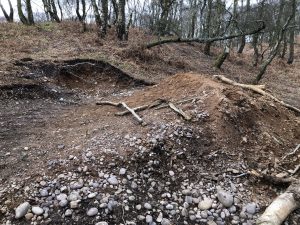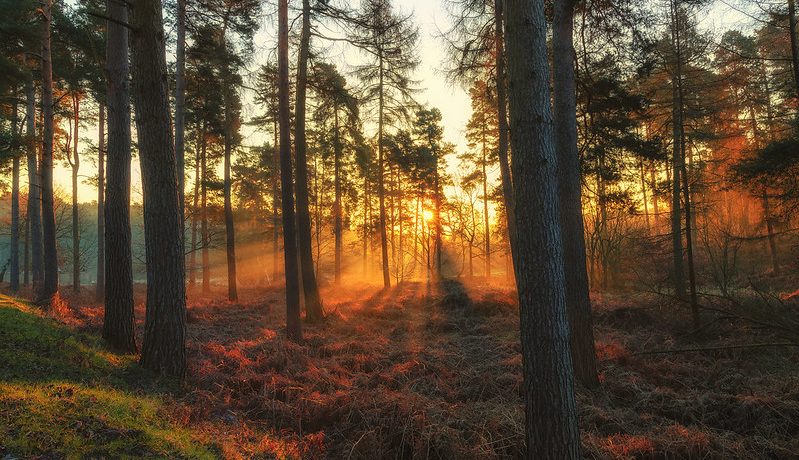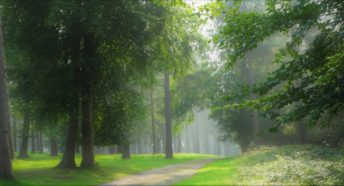Are we loving Cannock Chase to death?
Part of what was once a much larger medieval hunting forest (hence the ‘Chase)’, Cannock Chase was designated an Area of Outstanding Natural Beauty (AONB) in 1958. The landscape is remarkably varied, with ancient woodland, open heath and forestry. It’s home to four of Britain’s six reptile species along with some rare and endangered birds like the nightjar and woodlark and woodcock, not to mention some rare plants and insects.
Some 2.5 million people already visit Cannock Chase every year. With more than 30,000 additional homes due to be built within a 10-mile radius of the Chase by 2032, this number is set to increase further. Per hectare, the Chase has four to five times the density of visitors than the Lake District National Park.
The sheer number of visitors has led some to question whether we are in danger of loving the Chase to death. Visitors who stray off footpaths and bridleways may erode and fragment the heath, disturb nesting birds and trample the ground cover. Nutrient enrichment from dog waste is changing the soil chemistry. Recently, the roots of ancient oak trees dating back to Tudor times have been damaged by motorbikes and other vehicles riding on illegally constructed trails through Brocton Coppice SSSI and branches have been sawn off smaller trees.

Spending time outdoors in places like Cannock Chase, which is sometimes described as the green lungs of the West Midlands, has immense benefits for our physical and mental health. However, tensions can arise when attempting to balance the competing demands of outdoor recreation and access to nature with the need to manage, conserve and protect fragile habitats.
WATCH: Stafford-born naturalist Mike Dilger explains the issues facing Cannock Chase
A special area
Part of Cannock Chase is designated a Special Area of Conservation (SAC), which councils have a legal duty to protect. In 2019, Chris Walsh from the SAC Partnership stated: “Let it be under no doubt, Cannock Chase is dying, we have ecological and biological evidence from 40 years, the biodiversity is decreasing, the habitat is fragmenting, the vegetation is in a poorer state, we have increasing problems with fungal pathogens, we have increasing erosion. Cannock Chase is on a constant downward spiral. The habitats, the wildlife which you see here today, if it carries on at this rate, will not be here in 30 to 40 years time.”
Managing visitor pressure
The SAC is managed by the SAC Partnership, a consortium of local authorities that receives S106 and CIL money from housing developers, plus interested parties such as Staffordshire County Council, Forestry England and Cannock Chase AONB. It ran a public consultation in 2019 on its plans to improve trails, invest in more way signs and interpretation boards, provide conservation education to children and – more controversially – manage where people park by closing some parking areas in vulnerable parts of the Chase and creating more parking spaces, including free ones, in the more robust areas. Up to £7.8 million – funded by the levy on developers – could be available to deliver these plans, which were passed through Staffordshire County Council’s Cabinet in February after an initial vote in January.
Unfortunately, misinformation on social media, TV and local newspapers, has caused much anger and confusion. Sensationalised misleading headlines reported “Cannock Chase parking charge plan to cost nearly £8 million” when the car park alterations account for just 20% of the £7.8 million budget. Contrary to some reports, the Toc H disabled trail at Marquis Drive was never earmarked for closure and will be upgraded. While Camp field car park at the head of the trail was earmarked for closure in the proposals, Staffordshire County Council has proposed retaining a blue badge only car park to prevent people with disabilities having to cross the road to access it.
The SAC Partnership proposes closing a section of Chase Road, which cuts through the heart of the SAC, thus providing a safe tarmac track for people with disabilities, pedestrians, horse-riders and cyclists. One-fifth of the world’s remaining lowland heath is found of the UK. It thrives on poor acidic soils, but nitrogen deposition from pollution enriches them, threatening plant and animal life. The level of nitrogen deposition was already at critical levels a decade ago, making it important to reduce the number of cars in close proximity to the SAC. Creating new bus routes to key areas to further cut pollution has also been discussed. People would still be able to access this area via other nearby carparks such as Freda’s Grave.
While each landowner within the AONB will decide their own level of charging, the county council has stated that it would not exceed that at Chasewater (£3 for a day, or less than 10p a day for annual permit holders, and free for blue badge holders). There will still be over 500 free places to park around the AONB and the revenue from this will be ring-fenced for the upkeep of carparks.
The UK is one of the most nature-depleted countries in the world, with the State of Nature report 2019 confirming that 41% of species studied are in decline. Rather than quibbling over parking areas, we need to protect this gem of a place from further degradation, along with long term thinking about how to expand our natural spaces for future generations. As Sir David Attenborough said in the UK State of Nature report: “Our wonderful nature is in serious trouble and it needs our help as never before”.
For more information
Staffordshire County Council’s response to the proposals and FAQ
State of the AONB report and management plan
Plea from Stafford-born naturalist Mike Dilger to support the proposals





